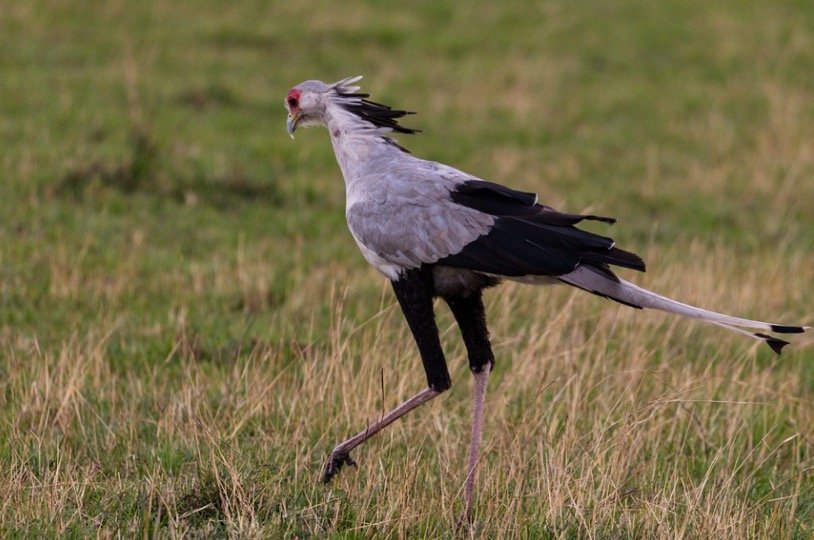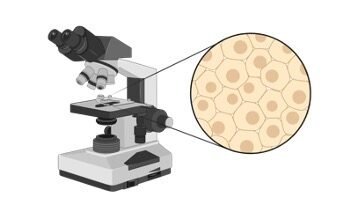Table of Contents
Secretary Bird Classification
Kingdom: Animalia
Phylum: Chordata
Class: Aves
Order: Accipitriformes
Family: Sagittariidae
Genus: Sagittarius
Species: Sagittarius serpentarius

Secretary Bird Description
It is a type of terrestrial bird, which has native distribution among grasslands and savannahs of sub-Saharan Africa. The species belong to the family Sagittariidae, which consists of only living species.
They have long legs that look like cranes and the body and head resemble eagles. Their long legs extend their height to 4.9 feet.
They are found in grasslands where the length of the grass is less than 1.8 feet and avoid areas with long grasses of more than 3.3 feet.

There are two species of terrestrial birds of prey including secretory birds and caracaras. Caracaras are found in the regions of Central and South America. Their long legs help them to lift their body above the vegetation to spot the prey easily to hunt them.
They are terrestrial birds that mean they hunt on foot. They mainly feed on smaller mammals, amphibians, reptiles, birds, and insects. Sometimes they also act as scavengers and feed on dead organisms.
They hunt and police their territories and spend most of their time in these activities. These birds tend to hunt in proximity to their breeding partners or also in small family groups.
During the hottest part of the day, they take a break and rest in the shade of the tree but otherwise they hunt throughout the day. They cover long distances of more than 20 miles per day to hunt their prey.
Secretary Bird Reproduction
Secretory birds mate only with a single partner that means they are monogamous. They also make their territories that are much larger up to 19 square miles in size. They usually breed throughout the year however it is common in the late dry season.
A nuptial display is performed by both males and females which is done by making a loud croaking sound and soaring high above the ground.

They defend their territories by chasing each other with their wings up and back. They make their nest together and place it at the thorny acacia tree.
It takes around six months to build their nest with the help of twigs, leaves, grasses, animal fur, and dung. The nest is placed between 8-40 feet over the ground and has up to 8 feet width. The same nest of often used for several years.
The eggs are pale blue-green or white. Female lay 1-3 eggs at 2-3 days intervals. Most of the time, females are on the nest but eggs are incubated by both parents. After 45 days, the eggs hatch, and the chicks rely on their parents for food for at least 40 days.
After 75-80 days chick leaves the nest. Depends upon the food availability, secretory birds often raise more than one chick at a time.
Fun Facts About Secretary Bird!
The extremely long legs of secretory birds provide them a strange look but they adapted them for its terrestrial niche. There are many other interesting concepts about secretory birds.

Secretary Bird: a Terrestrial Birds
Instead of flying, they prefer running and spend most of their time moving around on foot. However, they are also able to fly but it requires a lot of energy. Therefore they fly without flapping their wings with the help of thermal columns to save their energy.
They prefer moving on the ground due to the difficulties in flying and prefer flying only if necessary such as they fly to perform courtship rituals and to reach their nests.
Besides secretory birds, the kiwis, ostriches, and penguins also adapted themselves to the terrestrial lifestyle. These all species have not any related taxonomic group that clears that they lose their flying ability because of numerous occasions throughout history.
Unique hunting technique They usually hunt their prey by using many unique techniques. For example, they stomp on vegetation to flush out animals inside the tall grass and then chase down their prey.
They use their feet or bill to strike their prey and can use a force up to 5 times their own body weight. It shows that they have adapted very well to this hunting style. Due to their short toes, the secretory birds have limited grasping ability.
Therefore they cannot carry their prey away in their feet as other birds of prey usually do and eat it immediately. Sometimes they tear it apart using their feet but usually, they eat their prey whole.
Secretary Bird: The Archer of Snakes
The secretory birds have a great ability to kill even dangerous venomous snakes with their stomping techniques, therefore they get the name Sagittarius serpentarious which means ‘archer of snakes’.
They can kill snakes including cobras and adders by their strong kick and also prevent themselves from the bite of their prey by other features.
For example, they have tough scales on the lower legs that protect them from bites, and their long wings distract their prey because the hollow feathers do not get affected by snake bites.
Secretary Bird Citations
- The fast and forceful kicking strike of the secretary bird. Curr Biol . 2016 Jan 25;26(2):R58-R59.
- Tracheal Resection in a Secretary Bird ( Sagittarius serpentarius) with Granulomatous, Foreign-body Induced Tracheitis. J Avian Med Surg . 2017 Dec;31(4):308-313.
Share












